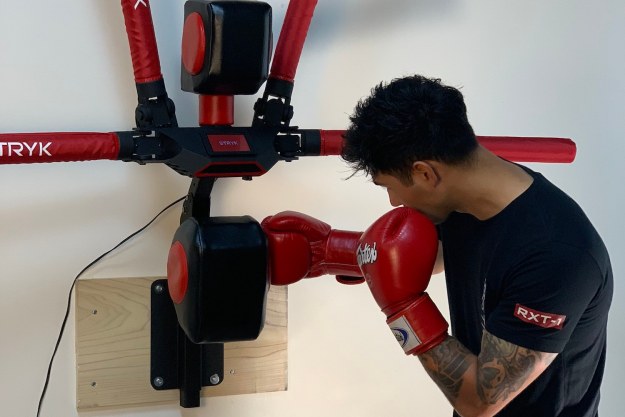The arts and crafts functionality of Dobot covers all the bases that makers have come to expect from programmable robotic assistants. 3D printing, laser cutting, painting, writing, and printing are all part of standard Dobot demonstrations, and while these tasks may seem like standard offerings for robotic assistants today, they also demonstrate what’s unique about Dobot’s hardware and software design. Dobot’s high accuracy, high repeat precision arm seems to be its greatest selling point, so beyond the detailed tasks set out in artistic projects like laser etching, Dobot can do basically anything you want it to.
Dobot is powered by Arduino, and can move along four different axes with incredible precision. Depeding on how you program it, the arm can be used for anything from playing games, to writing letters, to helping with scientific experiments. Again focusing on the non-professional interest in robotic arm devices, Dobot is built with a stepper motor in order to keep volume levels down for home use.
Because of that emphasis on ease and accessibility for tech-challenged users, Dobot is equipped with a variety of different control methods. At completion of the Kickstarter campaign, Dobot will ship already enabled with seven different control methods, including PC, mobile app controls, voice commands, Leap Motion integration, and physical gesture recognition. The Dobot team also promises EEG controls, but considering a history of questionable success with brain control technology in commercial applications, that seems like a fairly lofty goal.
Dobot has already far surpassed their original Kickstarter funding goal of $36,000, and with less than a week to go in the campaign have amassed more than $430,000 from over 800 backers. A minimum pledge of $499 earns backers a basic version of the Dobot robotic arm with a starter kit of attachable heads, and higher pledges can earn perks like power tool kits, Leap Motion tools, and EEG extras. If all goes according to plan now that the project is fully funded, Dobots are expected to ship starting in December of this year.
Editors' Recommendations
- Space station’s new robotic arm springs to life
- The iRobot Roomba j7+ monitors your floors to avoid wires, pet droppings
- A new robot is heading to the International Space Station
- Lenovo takes on M1-powered MacBooks with its own ARM-based IdeaPad 5G
- Man uses brain-controlled prosthetic robot arms to eat a Twinkie


